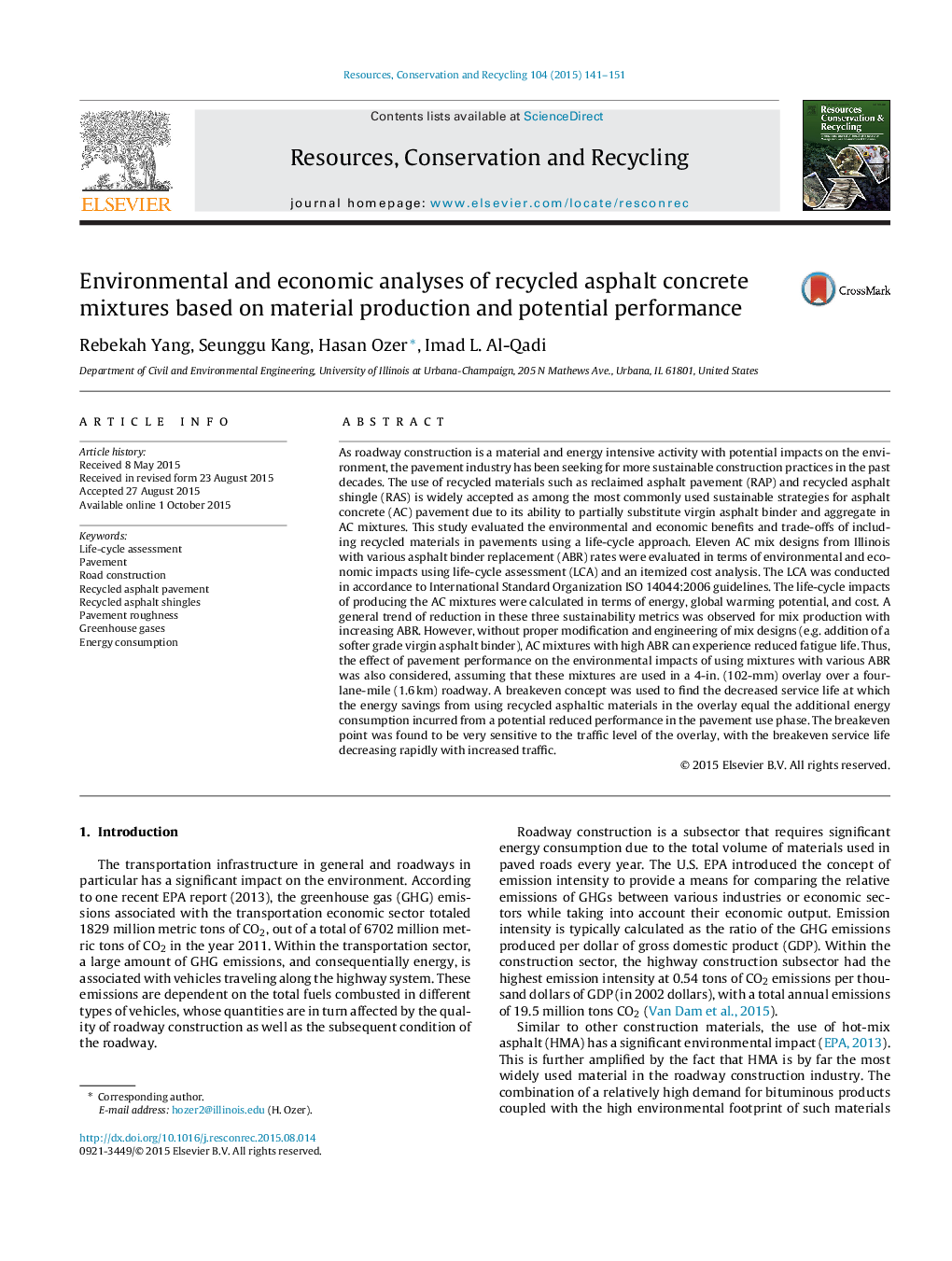| Article ID | Journal | Published Year | Pages | File Type |
|---|---|---|---|---|
| 1062817 | Resources, Conservation and Recycling | 2015 | 11 Pages |
•We evaluated environmental and economic impacts of recycled asphalt mixtures.•Energy, global warming potential, and cost decreases with increasing recycled materials.•Performance-based scenarios are conducted for pavement layers constructed using mixtures with increasing recycled content.•A breakeven year is defined between environmental savings and performance level.•The breakeven point is very sensitive to traffic level.
As roadway construction is a material and energy intensive activity with potential impacts on the environment, the pavement industry has been seeking for more sustainable construction practices in the past decades. The use of recycled materials such as reclaimed asphalt pavement (RAP) and recycled asphalt shingle (RAS) is widely accepted as among the most commonly used sustainable strategies for asphalt concrete (AC) pavement due to its ability to partially substitute virgin asphalt binder and aggregate in AC mixtures. This study evaluated the environmental and economic benefits and trade-offs of including recycled materials in pavements using a life-cycle approach. Eleven AC mix designs from Illinois with various asphalt binder replacement (ABR) rates were evaluated in terms of environmental and economic impacts using life-cycle assessment (LCA) and an itemized cost analysis. The LCA was conducted in accordance to International Standard Organization ISO 14044:2006 guidelines. The life-cycle impacts of producing the AC mixtures were calculated in terms of energy, global warming potential, and cost. A general trend of reduction in these three sustainability metrics was observed for mix production with increasing ABR. However, without proper modification and engineering of mix designs (e.g. addition of a softer grade virgin asphalt binder), AC mixtures with high ABR can experience reduced fatigue life. Thus, the effect of pavement performance on the environmental impacts of using mixtures with various ABR was also considered, assuming that these mixtures are used in a 4-in. (102-mm) overlay over a four-lane-mile (1.6 km) roadway. A breakeven concept was used to find the decreased service life at which the energy savings from using recycled asphaltic materials in the overlay equal the additional energy consumption incurred from a potential reduced performance in the pavement use phase. The breakeven point was found to be very sensitive to the traffic level of the overlay, with the breakeven service life decreasing rapidly with increased traffic.
